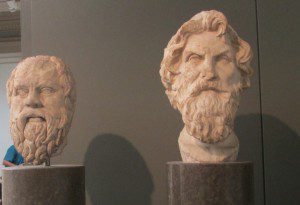 At one time many American Christian colleges did not want, did not believe in, and did not want “accreditation” by a national body of accreditation. What those schools wanted was faithfulness to the Bible regardless of what the educrats of this world said. But that all changed, and one of the distinctive features of Molly Worthen’s fine study, Apostles of Reason, is her attention to the Christian college movement.
At one time many American Christian colleges did not want, did not believe in, and did not want “accreditation” by a national body of accreditation. What those schools wanted was faithfulness to the Bible regardless of what the educrats of this world said. But that all changed, and one of the distinctive features of Molly Worthen’s fine study, Apostles of Reason, is her attention to the Christian college movement.
Personal example: When I was first teaching at TEDS, our Moody students needed a year at another college (and Trinity College on our campus), and that was not an issue for MBI since they didn’t want accreditation enough to grant a Bachelor’s degree. This story of Moody is a common story for Christian colleges, like Biola, with whom Worthen opens her chapter. I went to a Christian college, now called Cornerstone University — it was originally Grand Rapids Baptist Bible College then GR Baptist College then Cornerstone University … which tells the story in names of what Worthen presents.
A tension developed: a rigorous commitment to Bible and the gospel with no regard for the world’s acceptance alongside doted retellings of the acceptance of the scholarship of either students or professors who got their credentials at one of those educrat-approved schools. Or who honored the work of their professors by citing them.
The aim of the Christian college (or Bible institutes) was not education so much as preparation for ministries: missionaries, pastors, evangelists, and various levels of education. The status of someone educated mattered in society but the Christian college movement did not care about that status. Wheaton wanted accreditation, and was written off by many for it. Public higher education was the story of losing faith and trusting in human reason and science … that is the story with mythic proportions for many to this day. “Go off and get education and you will lose your faith.”
The only regard they needed was from one another (AABC), not the public educrat system. When schools began to tinker with a need for accreditation many saw it as the sign of decline. Spiritual excellence was what mattered most.
What changed much of this was World War 2. Education became a necessary credential for the work force, and Christian Bible institutes began to seek accreditation. And it wasn’t until the 50s that most Christian colleges began to hire PhDs.
Academic freedom for profs and freedom for students became major issues — and Worthen has some interesting details in her study of these elements. Academic freedom is constrained by a statement of faith at Christian colleges. Tenure was often not provided, and so dismissal was at the discernment/judgment of leaders (president, dean, boards). Profs began to push students to think, and this led to more student freedom and newspaper editorials… and some students got caught in the web of constituencies and professors and statements of faith.
And at the heart of both of these themes is commitment to the liberal arts, where students were exposed to far more than Bible and to ideas not at all consistent with the Bible.











